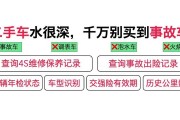allok(allok浏览器下载视频)
目前应该是有很多小伙伴对于allok方面的信息比较感兴趣,现在小编就收集了一些与allok浏览器下载视频相关的信息来分享给大家,感兴趣的小伙伴可以接着往下看,希望会帮助到你哦。
(一)

1. 助动词do的用法
do作助动词无意义, 其第三人称单数是does;
Do you have a basketball?
Yes, I do;
Do they have a soccer ball?
No, they don’t
Does she have a computer?
No, she doesn’t ;
Does he have a ping-pongball?
Yes,he does./No,he doesn’t.
句中的do和does都是构成疑问句和否定句的助动词
【典例分析】
—____ Wang Fang have two small eyes?
—No, she has two big eyes.
A. Does
B. Do
C.Is
D. Are
【答案】A
考点:考查一般疑问句。
2. play用法
可译为“打,弹奏,玩”等意思,当后面跟球类,游戏,牌等时,要用“play+球类、牌”这个结构,前面一定不能加冠词。
【典例分析】
We play_______bsketball this afternoon.
A.The
B. A
C.an
D./
【答案】D
【解析】
试题分析:句意:今天下午我们打篮球。根据play+球类;故答案是D 。
考点:考查零冠词的用法。
3. have与there be的区别
There be是表示“在某处存在某物”,There is+名词的单数+介词短语;There are+名词的复数+介词短语;而have则是表示所属的意思,即“拥有”,通常是人。例如:
There is a book on the desk.
书桌上有一本书。
I have many books.
我有很多本书。
【典例分析】
I have some books at home(同义句)
【答案】 There are some books at my home
考点:考查同义句。
重点句型及语法复习:
1. Let’s play volleyball
① let’s=let us, let+人称代词的宾格,us是we的宾格
② let’s +动词原形,如,Let’s play soccer.
let为使役动词,其后接省略to的不定式,用于提出建议,常构成Let’s do...!这个结构,意为“让我们...吧!”或“我们...吧!”
表示同意说话人的建议用OK/All right/Good idea等,若表示委婉地拒绝可用 Sorry, I...例如:
——Let’s go to the park.
让我们去公园吧。
------OK.好的。
------Let’s play football.
让我们踢足球吧!
------Sorry,I have to do my homework.
对不起,我还得做家庭作业。
【典例分析】
-----Let me____ you.
A. help
B. to help
C. for help
D.helping
【答案】A
【解析】
试题分析:句意让我们帮助你!根据let’s +动词原形。结合语境故选A。
考点:考查固定句型。
2. 主语为第三人称单数含有实意动词的一般疑问句
当主语为单数第三人称的一般疑问句和特殊疑问句,用助动词does.(does是do的单数第三人称形式)
主语为第三人称单数时一般现在时的结构
肯定句 : 主语+谓语动词的单三形式+其他,
如: He likes bananas a lot.
他非常喜欢吃香蕉。
否定句 :主语+助动词(doesn't)+ 动词原形+其他。
如: He doesn't like bananas.
他不喜欢吃香蕉。
疑问句 :助动词(Does)+主语+动词原形+其他。
肯定回答 :Yes,主语+does. 否定回答:No,主语+doesn't.
如: Does Kate like meat?
凯特喜欢吃肉吗?
Yes, she does.
是的,她喜欢。
No, she doesn't.
不,她不喜欢
【典例分析】
She_____________ oranges, but she _____________ apples.
A. like, don’t like
B. likes, doesn’t likes
C. likes, doesn’t like
D. likes, don’t like
【答案】C
考点:考查动词的时态及否定形式。
3.一般现在时:
定义:一般现在时表示现在经常反复发生的动作、存在的状态或习惯性的动作的时态。
构成:一般现在时用行为动词的原形,但第三人称单数作主语时,动词的词尾要加-S。(一般的动词词尾+S。以sh/ch/s/x结尾的词+es.以辅音字母Y结尾的把Y变成i,+es。辅音字母+o结尾的+es.)
一般现在时的用法:
1) 经常性或习惯性的动作,常与表示频度的时间状语连用。
时间状语: always, usually, regularly, every morning/ night /evening/ day/ week, often, sometimes, occasionally, from time totime, twice a week, rarely, seldom, once a month hardly ever, never.
I leave home for school at 7 every morning.
2) 客观真理,客观存在,科学事实。
The earth moves around the sun.
Shanghai lies in the east of China.
3) 表示格言或警句中。
Pride goes before a fall. 骄者必败。
☆注意★:此用法如果出现在宾语从句中,即使主句是过去时,从句谓语也要用一般现在时。
例:Columbus proved that the earth is round.
4) 现在时刻的状态、能力、性格、个性。
I don't want so much.
Ann Wang writes good English but does not speak well.
比较:Now I put the sugar in the cup.
I am doing my homework now.
【典例分析】
I____ a big nose, but he ____ a small nose.
A. have; have
B. have; has
C. has; has
D. has;have
【答案】A
考点:考查动词的时态。
1. surprise名词,意思是“惊奇;诧异”
1)to one's surprise令某人惊奇的是……(在初一考的较少,但是到了初二初三这就是一个很重要的短语)
To our surprise, he won the first in the 100-meter race.
令我们吃惊的是,他在100米赛跑中得了第一名。
2)in surprise 吃惊地;惊异地
“You are a student?” he said in surprise.
“你是学生?”他吃惊地说。
3)surpring令人吃惊的,形容物或事情;surprised“吃惊的”,用来形容词人感到吃惊的。
【典例分析】
To surprise,he can pass the exam.(he)
【答案】his
考点:考查代词的用法。
2. Chinese名词,意思是“中文;汉语”.
What's this in Chinese?
这用英语怎么说?
拓展:Chinese名词,意思是“中国人”.其单复数形式相同,都是Chinese.(对于单数变复数的规则大家要好好复习一下,学习本身就是一个复习的过程)
【典例分析】
He isn’t a boy,but he can speak very well (China) .
【答案】Chinese Chinese
【解析】
试题分析:句意:他不是一个中国男孩,但是他能说汉语说得很好,根据一个中国男孩,要用形容词修饰名词,根据speak+语言表示说某种语言。故答案是He often helps me study English。
考点:考查名词。
3. some adj.一些,若干。
它可修饰可数名词(用复数形式),也可修饰不可数名词,常用于肯定句中。在否定句和疑问句中some要变为any. (表示建议、请求或征求意见时用some)
【典例分析】
Would you like milk?
A.any
B.some
C.a
D.the
【答案】B
【解析】
试题分析:句意:你愿意要一些牛奶吗?根据some用于疑问句中是希望得到对方的回答;故选B 。
考点:考查some的用法。
4. busy adj.忙碌的;反义词:free(空闲的)
常用短语:be busy with sth=be busy doing sth 忙于做某事
eg:He is busy with his homework.=He is busy doing his homework.
他正忙于做家庭作业。
【典例分析】
He is busy his homework
A.do
B.does
C.doing
D.did
【答案】C
考点:考查动词短语。
5. Have a good time!祝大家玩得开心!
该句常用来表示对他人的祝愿,它相当于:Have a nice /great time!
have a good time = enjoy oneself(oneself要随主语的变化而变化) = have fun
They are having a good time. = They are enjoying themselves.= They are having fun. 他们正玩得高兴。
【典例分析】
She has a good time (同义句)
【答案】She has fun/ She enjoys herself
【解析】
试题分析:句意:她玩的很高兴。根据have a good time = enjoy oneself(oneself要随主语的变化而变化) = have fun ;故答案是She has fun/ She enjoys herself。
考点:考查同义句。
6. 时间介词at /in /on辨析
1) at常与“钟点时刻”搭配,表示“在具体的某一时刻”。
at 8:00 in the morning.在早上8点
2) on常与“日期”“星期几”搭配,表示“在某一天或某一天的上/下午、晚上。”
on September 1st 在9月1日
on a cold morning 在一个寒冷的上午
3) in表在某月/季节/年/世纪等。
in 1979 在1979年
in September 在9月份
in spring在春天
△ 表时间at < on < in(in 年 in 月 on 日 at 小时)
4) 固定词组
at dawn在黎明
at noon在中午
at night在晚上
at sunrise在黎明/日出时
at Christmas在圣诞节
at lunch time在吃中饭时
at this / that time在这/那时
at the age of 20在20岁时
on weekend(s)在周末
in the morning / afternoon /evening在上午/下午/晚上
【典例分析】
We have an English concert _____ July 5th each year.
A. in
B. at
C. on
D. of
【答案】C
考点:考查介词的用法。
重点短语及语法复习
1. how much表“价格”的句型:
1)how much 引导的特殊疑问句,询问物品的价格。“...多少钱”的句式为“How much+be+主语?”。其回答方式为“It's+具体价格”或“They are+具体价格”.
用“It's”还是“They are”,取决于问句中的主语是单数还是复数。
例:a)单数如例句。
b)复数.-How much are these pants? -They're nine dollars.(这裤子多少钱? 9美元。)
2)“How much+Be+主语?”的句式,还可以用“What's the price of+sth ?” 的句式替换。其中,Be动词为is,不随后面物体单复数的变化而变化。
例:What's the price of those pants?(这裤子的价钱是多少?)
What's the price of your book? (你的书的价钱是多少?)
3)货币。
货币都有一定的表示符号.如:美元$(dollar),英镑£(pound),法郎F.F(france),人民币¥(yuan).这些符号通常放在数字前,表示多少钱.
如:a dollar=$1
注:外国货币都有单复数之分,而 人民币没有。如:8 dollars=$8; 8 yuan=¥8
【典例分析】
What’s the price of the dictionary?(改为同义句)
__________________ is the dictionary?
【答案】How much
考点:考查同义句
2. 名词所有格的构成法:
a.单数名词词尾加 ’s, 如:the boy’s bag男孩的书包,Mike’s knife迈克的刀子,复数名词词尾如没有s,也要加 ’s,如: the Children’s Palace少年宫,men’s room男厕所。
b. 若名词已有复数词尾-s,只加 ’:the teachers’ reading-room 教员阅览室。
注意: 名词所有格词尾’s的读音与名词复数词尾-s的读音相同。
c. 表示几个人共有一样东西,只需在最后一个人的名字后加’s,
如:This is Tom and Jason’s room. 这是汤姆和杰森共有的房间。
若表示各自所有,则需在各个名字后加’s,
如:These are Tom’s and Jason’s rooms. 这些是汤姆和杰森各自的房间。
注意:在某些句子里,名词所有格修饰的词,往往可以省略,如John‘s bike is better than Mike’s (bike).约翰的自行车比迈克的好。
【典例分析】
September 10th is___________.
A Women's Day
B. Children's Day
C. Mid-autumn Day
D. Teachers' Day
【答案】D
【解析】
试题分析:A Women's Day 妇女节; B.Children's Day 儿童节;C.Mid-autumn Day 中秋节;D.Teachers' Day教师节;句意:九月十日是教师节。根据由题意可知故选D
考点:考查常识知识。
3. 序数词:
定义:表示事物的顺序的数词叫做序数词。它的作用相当于名词或形容词,可作主语、宾语、定语和表语。 用法
1.序数词的构成:
(1) 第一:first 第二:second 第三:third
(2)第四至第十九均在相应的基数词后加-th,但第五(fifth)和第十二(twelve)均把基数词five(五) 和twelve(十二)词尾的ve改为f,再加-th。基数词八(eight)的序数词直接在eight后加-h,即eighth, 九(nine)的序数词是将nine词尾的e去掉,再加-th,即 ninth。
(3) 整十的序数词是把对应的基数词的最后一个字母y变为ie再加-th。
(4)表示“几十几”的基数词变序数词时,只将个位数变为序数词,十位数不变。
2. 序数词前一般要加定冠词the表示顺序。
The Yellow Riveris the second longest river in China.
3. 序数词常用作名词的定语,但当名词前已有物主代词等限定词时,则不再用the her fourth birthday
4.表示英语中的分数时,分子用基数词,写在前面,分母用序数词,写在后面。当分子超过1时,分母的 序数词后要加“s”。
1/3 one third 2/5 two fifths
5. 序数词前有时也可用不定冠词a/an,这时不再表示在具体范围内的“第几”,而是表示在原有基础上 的“又一个,另一个”。 I think I must do it a second time.
6.表示编号时,常把基数词放在名词后面来表示顺序,相当于“the+序数词+名词”。
Lesson Five=the fifth lesson
【典例分析】
The boy is only______. Today is his _________ birthday.
A. five;five
B. fifth; five
C. fifth; fifth
D. five; fifth
【答案】D
考点:考查序数词的用法。
1. make的用法:
make是使役动词,其意义及用法介绍如下:
1) make sb. do sth.让某人做某事。如:
He makes me work all day.
他让我整天工作。
2) make sb. /sth+形容词。如:
Let’s make our class clean.
咱们把教室打扫干净吧!
3) make after sb追求某人
make friends交朋友
make tea/coffee沏茶/泡咖啡,
make a coat 做衣服
make the bed铺床
makemeal/breakfast/supper/lunch/dinner 做饭/早餐/晚饭/午饭/正餐 。
【典例分析】
This movie makes me (高兴)
【答案】happy
考点:考查动词短语。
2. strict的用法:
①be strict with sb. 表示“对某人要求严格”的意思。
例如:My parents are strict with me.
我父母对我要求非常严格。
②be strict in sth. 表示“对某事要求严格”的意思。
例如:Our teacher is strict in everything.
我们老师在每一件事上对我们都非常严格要求。
③bestrict with sb. in sth 则表示 对某人在每件事上都要求严格。
例如:My parents are strict with me in everything.
我父母在每件事上对我要求严格。
【典例分析】
Our teacher is strict us
A. in
B.with
C. on
D. to
【答案】B
【解析】
试题分析:句意:我们的老师对我们严格要求;根据bestrict with sb. 表示“对某人要求严格”的意思;故选B。
考点:考查介词的用法。
3. interesting / funny 辨析
Interesting“有意思的;有吸引力的”,指引起理性的或智慧的兴趣。Funny“逗乐的;有趣的;使人快乐的”,强调“滑稽可笑的”
English is interesting.
英语很有趣。
I find this book interesting.
我发现这本书很有意思。
This is a funny movie.
这是一部搞笑的影片。
This game looks fun.
这个游戏看起来好玩。
【典例分析】
The book is .(interesting /funny)
【答案】interesting
考点:考查形容词的用法。
4. look, see, watch, read 辨析
1) look为不及物动词,指看的过程,不一定看见。后接宾语须加at。
2) see 用作及物动词。后面直接接宾语。“看见,看到”强调看的结果。“看医生”“看电影”常用这个词。
①He looks at the blackboard,but can’t see the words.
他看了看黑板,但看不见这个词。
②see the doctor看医生
③see a film/movie看电影
3) watch为及物动词。“观看,注视”指非常仔细全神贯注地看。“看电视”“看比赛”习惯用这个词。
①watchTV看电视
②watch the football game看足球比赛
4)read本义为“读,朗读”,“看书,看报,看杂志”常用这个词。
read a book看书
read the e-mail 读这封电子邮件。
【典例分析】
I want to _____the doctor.
【答案】see
【解析】
试题分析:根据see 用作及物动词。后面直接接宾语。“看见,看到”强调看的结果。“看医生”“看电影”常用这个词;句意:我想看医生。根据由题意可知故填see。
考点:考查动词词义辨析。
5. 辨析 speak,say, talk,tell
1) speak“说”,“讲话”。强调说的能力。
①作及物动词,只能接某种语言作宾语:speak+ 语言 “说某种语言”。
②作不及物动词,“讲话,发言”
She is speaking.
她正在讲话/发言。
2) say“说”,后面跟说的内容。
I can say ABC.
我会说ABC.
say hello to sb.
向某人问好。
say sorry to sb.
向某人道歉。
say it in English
用英语说(它)。
3) talk“谈论,交谈”。
①talk to sb.对某人说话
②talk with sb同某人交谈
③ talk about/on" 谈论""
4) tell“告诉,讲述”。
①tell sb. sth. = tell sth. to sb. 告诉某人某事
②tell sb. about sth.告诉某人关于某事
③tell sb. to do sth.告诉某人去做某事
tell sb. not to do sth. 告诉某人不要做某事
④ tell a story 讲故事
tell a lie 撒谎
tell the truth讲实话
【典例分析】
I can it in English
A. speak
B. tell
C. say
D. talk
【答案】C
考点: 考查动词的辨析。
重点句型及语法复习
1.感叹句
感叹句常用what和how引出强调部分,并放在句首,一般情况下,what修饰名词,how修饰形容词、副词。
1)what感叹句的结构为:what a / an + 形容词+ 可数名词单数
What+ 形容词 +可数名词复数 + 主语 + 谓语 + 其他!
What+形容词 + 不可数名词
①What a good boy he is!
他是一个多么好的男孩啊!
②What an interesting book it is !
多有趣的书啊!
③What delicious broccoli (it is) !
多好吃的花椰菜啊!
④What beautiful flowers in the garden !
花园中的花式多么美丽啊!
2)how感叹句的结构为: How + 形容词/副词 + 主语 + 谓语 + 其他!
How interesting the book is !
这书多有趣啊!
How beautiful the flowers in the garden are !
花园中的花式多么美丽啊!
How well he draws !
他画得多好啊!
【典例分析】
_______it is! Let’s go swimming.
A.what a fine weather
B. what fine day
C.what a fine day
D. what bad day
【答案】C
考点:考查感叹句。
2. What’s your favorite subject? 你最喜欢的学科是什么?=What subject do you like best?
My favorite subject is math. = I like math best.
我最喜欢的学科是数学。
1)What’s your favorite…? = What…do you like best?
My favorite… is ". = I like…best.
2) favorite前一定要用形容词性物主代词或名词所有格一起来修饰后面的名词。不可根据汉语意思而用人称代词如I, He 等。
What’s Gina’s favorite subject?
Gina最喜欢的学科是什么?
Her favorite subject is math.
她最喜欢的学科是数学。
【典例分析】
—What’s Tom’s favorite city?
—______ favorite city is New York.
A. Its
B. It’s
C. His
D. He
【答案】C
【解析】
试题分析:句意:---汤姆最喜欢的城市是什么?---他最喜欢的城市是纽约。根据favorite前一定要用形容词性物主代词或名词所有格一起来修饰后面的名词;故选C。
考点:考查代词的用法。
本文结束,以上,就是allok,allok浏览器下载视频的全部内容了,如果大家还想了解更多,可以关注我们哦。
相关文章
- 详细阅读
-
? :一手车卖给了二手车商,成交后第二天说车子是事故车,说隐瞒事实?详细阅读

我一手车卖给了二手车商,成交后第二天说车子是事故车,说我隐瞒事实,要求全款退车,我该怎么办? 报警处理。二手车行在车辆鉴定方面是内行,买车人在车辆鉴定...
2022-08-16 2468
-
搞笑短视频题材 :个人短视频槽点题材如何构思?详细阅读

我们反过来看一些搞笑的账号,这些账号虽然粉丝不少,内容也很不错,但是关注搞笑账号的用户,大多数都是为了开心的,所以这样的粉丝群体自然就很难变现。所以我...
2022-08-16 2976
-
91短视频版ios :有哪些苹果手机上能用,你又不愿意让人知道的好用的app呢?详细阅读

在苹果手机中使用的软件,在不越狱的情况下,大多数人都是在苹果商店上下载软件。 但是还有其他的方法可以让你的手机中安装上在苹果商店中没有的软件。 有两个...
2022-08-16 2321
-
短视频作品怎么发 :抖音如何发长视频完整版?详细阅读

抖音是我们熟知的一款非常火爆的短视频软件,在抖音上可以浏览别人的作品,也可以发布自己的作品,那么自己发布作品的时候想要发长视频,怎么发呢?一起来看一下...
2022-08-16 2275
-
短视频用户行为分析 :据说中国近八成手机网民是短视频用户,侵权问题如何解决?详细阅读

侵权这个问题在如今这个自媒体泛滥的时代不好精准定位。 因为一个好的题材自己发布出去可能只需要短短的几分钟时间就能够引起火爆。 平台的大数据根本无法做...
2022-08-16 1843
-
91短视频ios :苹果手机除了app store,还能在哪里下载软件?包括一些破解软件?详细阅读

苹果手机,下载软件,好像只能在苹果手机自带的APP STORE下载吧?我自己从来没有尝试过在其他地方下载,在越狱最火热的年份,我也没有尝试过越狱。 2...
2022-08-16 1668
-
富二代富二代短视频 :为什么现在富二代比穷二代努力?详细阅读

大家好这里是二次元胡辣汤。酸爽可口。 看到这个问题我首先想到了马太效应。富者更富,穷者更穷。这也是一个不争的事实。但是不否认那些努力的年轻人。 富二...
2022-08-16 1682


发表评论